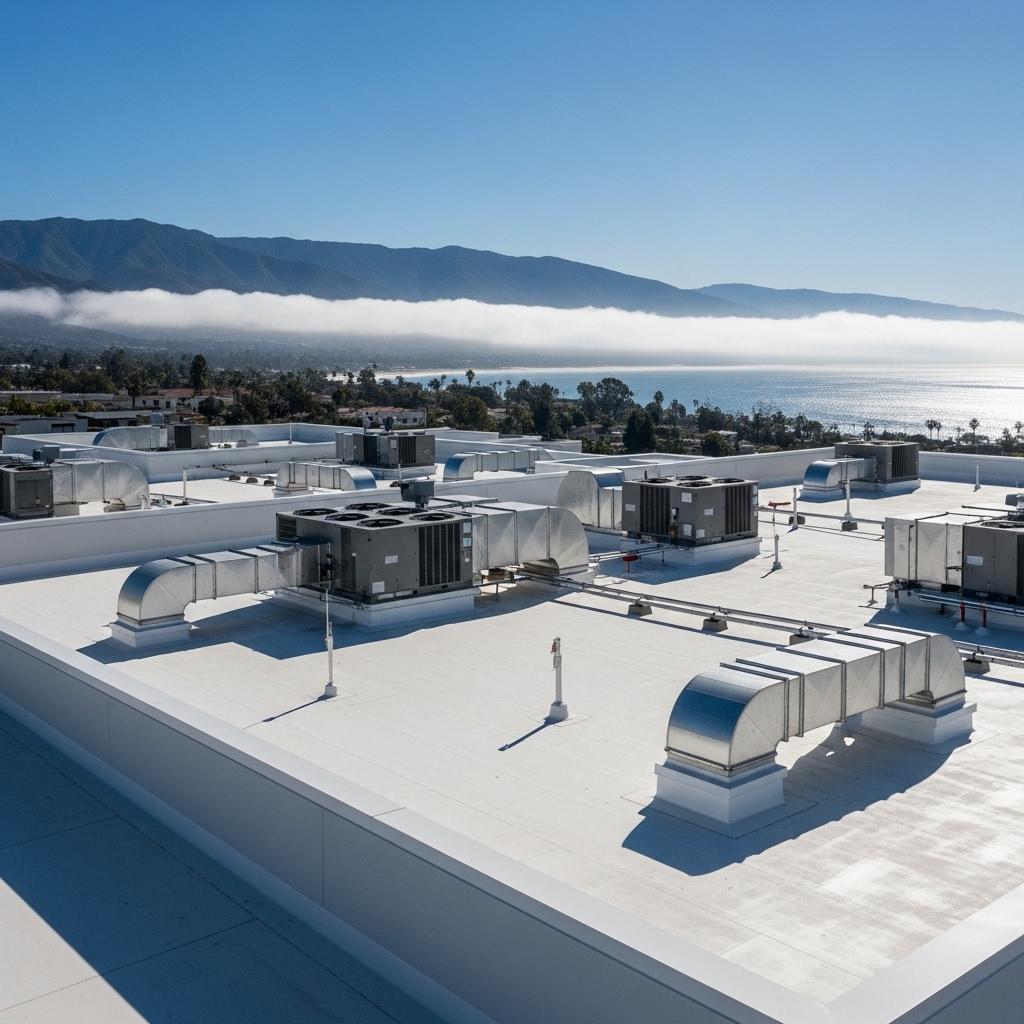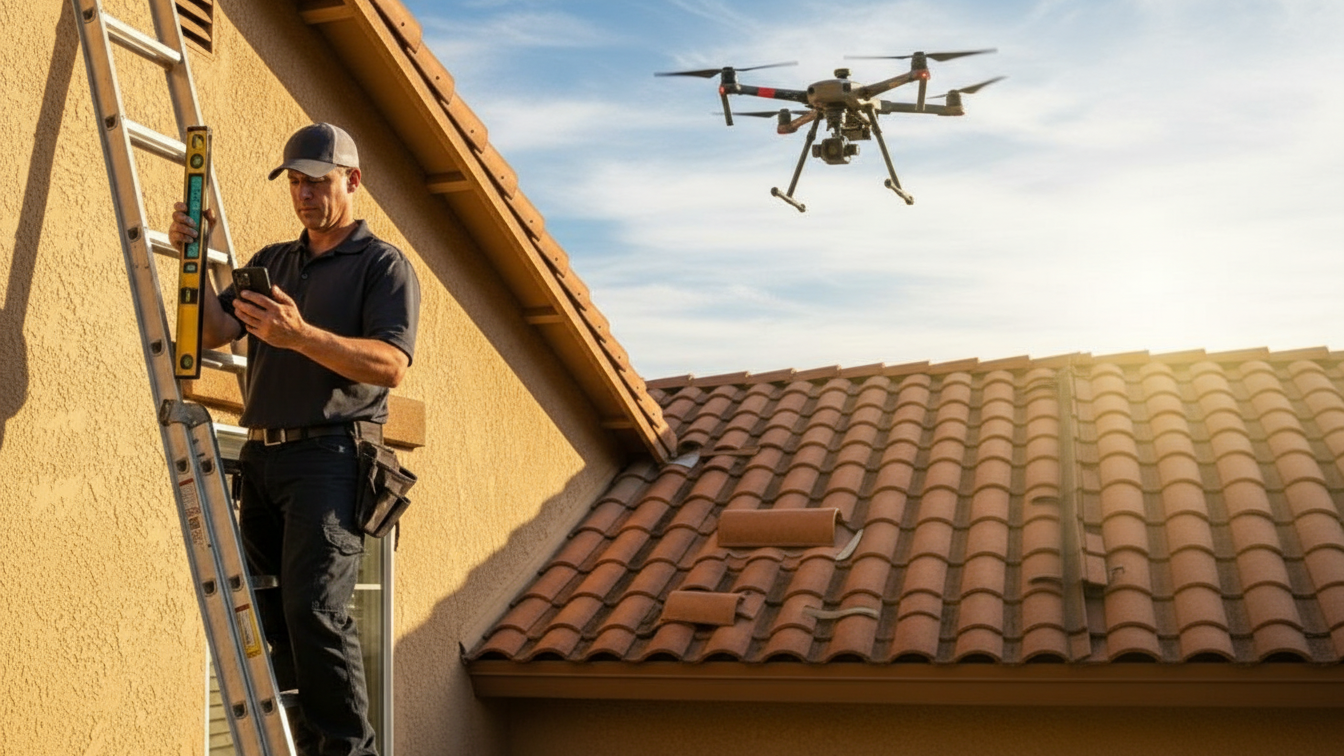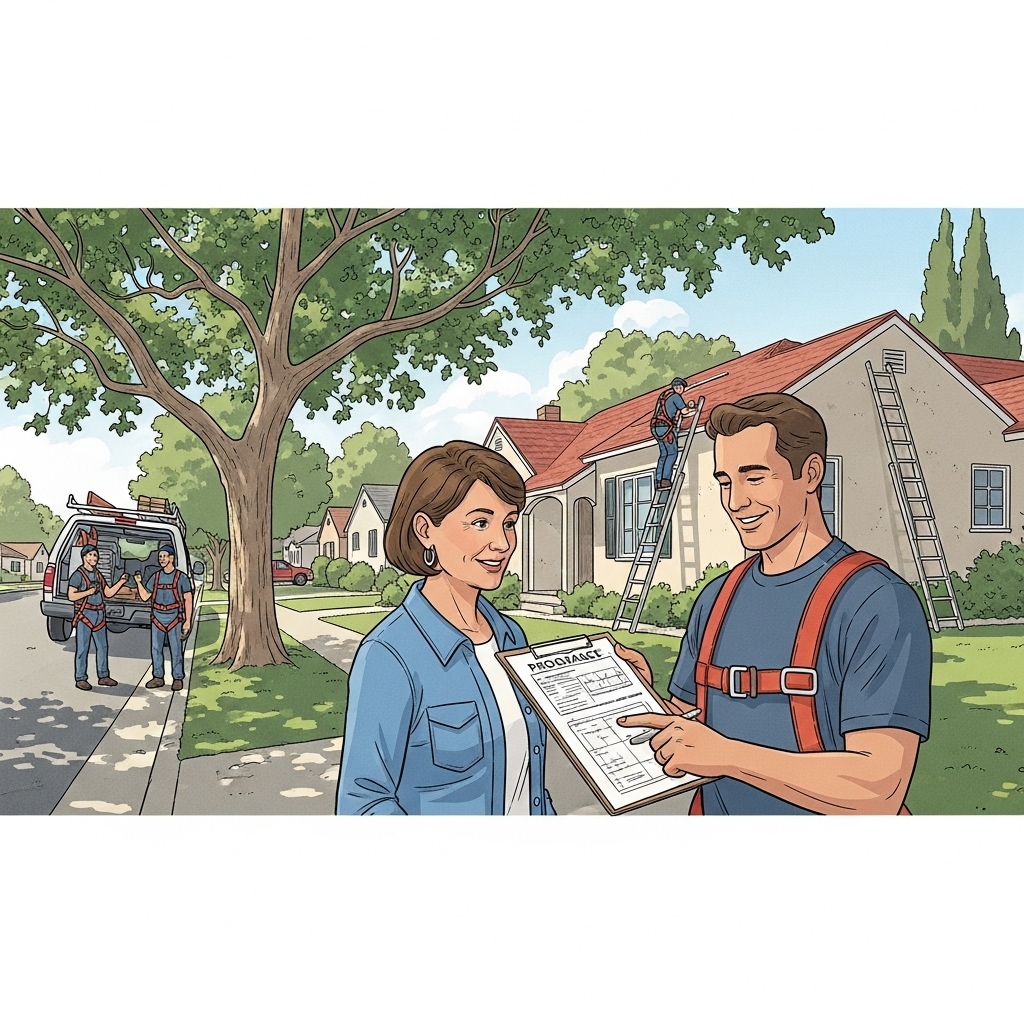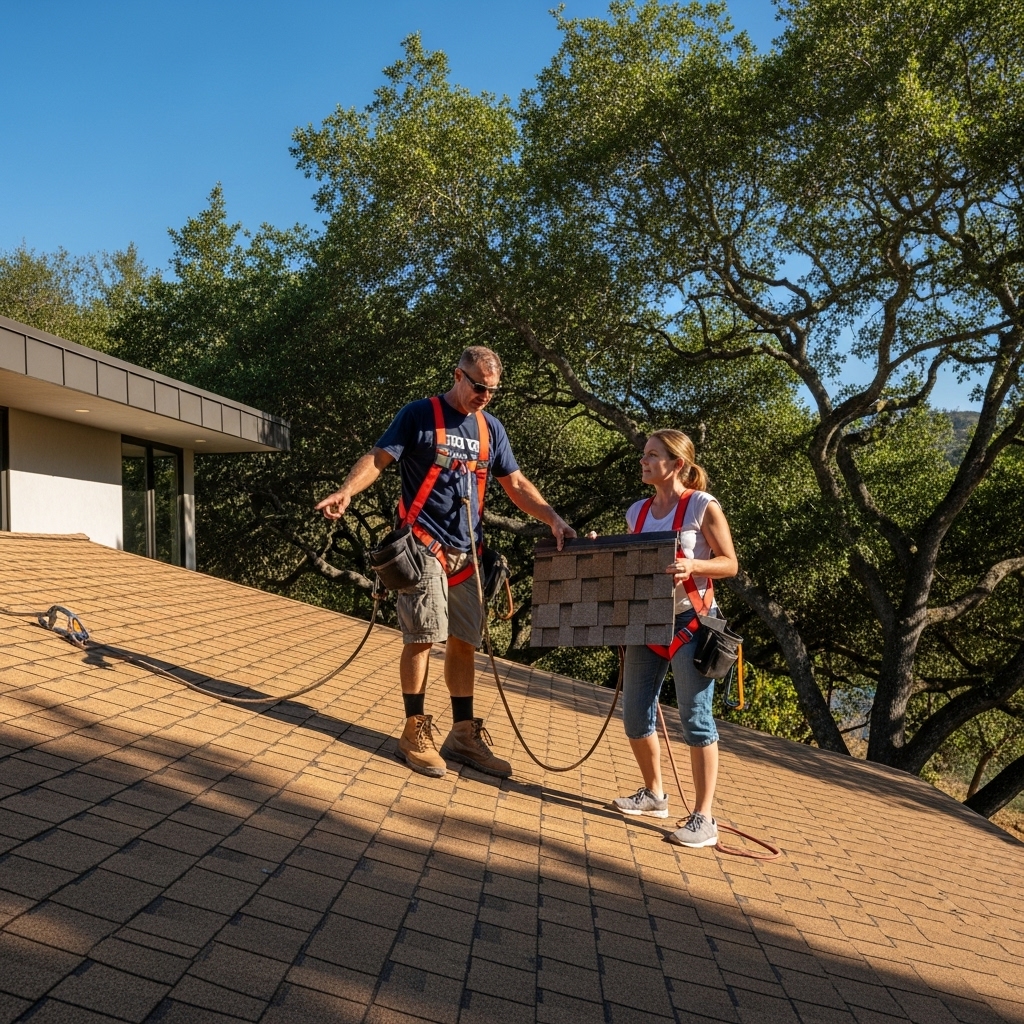Walk through any commercial district in Santa Barbara—from the lively blocks of State Street to the coastal corridors of the Funk Zone—and you will see rooftops working quietly in the background to keep businesses productive, comfortable, and protected. Around here, the roof does more than cap a building; it shapes energy use, shields sensitive interiors from coastal weather, and influences day-to-day operations in subtle but important ways. As a local who has watched seasons of marine layer mornings give way to bright, salt‑tinged afternoons, I can tell you the right system and the right stewardship make all the difference. That is why smart owners and facility managers put thoughtful attention into commercial roofing choices that fit Santa Barbara’s unique blend of climate, architecture, and regulatory expectations.
When we talk about benefits, we are not speaking in generic terms. The advantages that matter most here are tailored to the coast: resilience in salty air, resistance to sundowner winds that can rush off the Santa Ynez range, reflectivity that softens summer heat without sacrificing the city’s desired aesthetics, and detailing that stands up to periodic heavy rains. Add to that the realities of operating a business in a place where natural beauty, design guidelines, and environmental stewardship are core values, and the case for a well-planned commercial roofing strategy becomes clear.
The climate-backed case for better roofing
Santa Barbara lives in a convergence of marine and Mediterranean influences. We enjoy mild temperatures, but that does not mean mild roofing conditions. Salt spray can travel blocks inland, accelerating corrosion on fasteners and flashings. The marine layer traps moisture in the mornings, which can condense on cooler roof surfaces, while afternoon sun drives UV exposure that tests membranes and coatings. When El Niño years arrive, we can experience intense, sustained rainfall that challenges drainage design and seam integrity. A roof that is engineered for these swings provides daily peace of mind and long-term value.
Because our weather often feels gentle, roofing stresses become a “silent” threat—incremental UV exposure, tiny expansions and contractions over hundreds of cycles, and minute amounts of airborne salt that, over time, find any weakness. The benefit of a high-performing system is not only that it resists the dramatic event; it also slows the steady march of wear-and-tear, preserving the roof’s protective envelope and helping interior finishes, equipment, and inventory stay in better condition.
Energy efficiency and comfort pay dividends beyond the utility meter
Reflective membranes, light-colored coatings, and well-insulated assemblies reduce heat absorption during Santa Barbara’s many sunny days. That reduces the strain on HVAC equipment, helps maintain even indoor temperatures, and supports work environments where staff focus better and customers linger longer. The benefit runs deeper than a monthly energy line item; quieter HVAC cycles mean fewer temperature complaints, less equipment short-cycling, and a more stable building envelope that supports everything from IT closets to specialty retail displays.
The Title 24 requirements that guide roofing reflectance and insulation values in California are not merely boxes to check. In practice, they encourage choices that align with coastal living: cooler interiors under bright skies and systems that handle temperature swings with grace. When selected and installed by a team that understands coastal detailing, the result is a roof that quietly improves daily life in the building, often more effectively than dramatic interior upgrades.
Durability that matches coastal realities
In Santa Barbara, durability means resisting corrosion, wind uplift, and UV degradation. The most obvious example is hardware—choosing stainless or appropriately coated fasteners, specifying compatible metals to reduce galvanic reaction, and ensuring terminations are sheltered from direct salt exposure. But durability also lives in the less visible details: correctly set parapet caps, thoughtful transitions at stucco walls, robust sealants at equipment curbs, and drain bowls with the capacity to move water quickly during downpours.
A key benefit of a well-designed system is how it performs during those occasional windy afternoons and rare but memorable storms. When sundowner winds accelerate, negative pressures tug at seams, corners, and edges. Roofs engineered for uplift—through secure mechanical attachment or the right ballast and edge metal—give owners confidence. And during heavy rains, well-planned slope and clean drains eliminate ponding that weakens membranes and loads structural decks. Those are not theoretical advantages; they are the difference between a routine weather event and an emergency call.
Ease of maintenance and operational smoothness
Commercial properties here frequently host rooftop equipment—HVAC units, kitchen vents, solar arrays, and telecom gear. A roof that anticipates traffic with walk pads, clearly defined service routes, and reinforced penetrations does not just look professional; it prevents accidental damage. The benefit is compounding: fewer disruptions from roof leaks, fewer after-hours calls, and better relationships with tenants and neighbors because rooftop work is faster and cleaner.
Maintenance simplicity also preserves warranties and lowers stress for facility teams. Easy-to-access drains, standardized flashing details, and labeled penetrations create a “map” that anyone on the roof can understand. Over time, that clarity lowers risk and keeps documentation tidy—especially useful for property managers who inherit portfolios or rotate staff.
Design and neighborhood fit
Santa Barbara cares about how buildings present to the street and to the hills. Even on low-slope roofs you rarely see from ground level, details can influence the building’s appearance and its long-term harmony with neighboring structures. Thoughtful edge profiles, parapet coping color, and mechanical screening raise the visual bar. The benefit is subtle but real: your property reads as well-cared-for, which supports tenant retention and enhances the building’s standing with local stakeholders.
Many commercial corridors sit within areas where design review and community standards matter. Roofing choices that align with those expectations avoid delays and facilitate smoother projects. That is a quiet but powerful advantage that owners appreciate when timelines are tight and tenants are eager for improvements.
Sustainability that is practical, not performative
Santa Barbara’s environmental ethic runs deep. Roofing that reduces heat gain, considers recycled content, and plans for end-of-life material handling helps businesses walk that talk. Cool roof technology, strategic insulation upgrades, and durable systems with longer lifespans reduce waste over the building’s life. If solar is on the roadmap, a roof designed for future loads and penetrations can eliminate rework later, avoiding disturbance to tenants and keeping the site tidy.
Mid-project coordination is where sustainability and practicality meet. When the roofing contractor engages early with mechanical, solar, and structural teams, penetrations are minimized and sealed once, not reworked repeatedly. That results in a cleaner roof and an easier time maintaining performance. It is also the point in a project where owners can confirm that their investment in commercial roofing will support both near-term operations and long-term environmental goals without unnecessary compromises.
Risk management and resilience
Business continuity matters. The roof is an insurance policy against the kind of disruptions that ripple through operations—inventory damage, IT outages, kitchen downtime, or health and safety closures. A resilient roof limits those risks with redundancy in water paths, robust edge conditions, and penetrations that shed water even when sealant ages. For Santa Barbara’s mix of coastal restaurants, boutique retail, professional offices, and light industrial spaces, the ripple effects of a leak can be substantial. Investing in a system built around resilience is a straightforward way to protect revenue, reputation, and the comfort of guests and staff.
Resilience shows up in the small things: oversized scuppers that keep water moving, sacrificial layers where service traffic is heaviest, and fastening patterns that reflect wind exposure rather than bare code minimums. Owners often notice the difference in the quiet way a storm becomes a non-event and how seasonal transitions require less scrambling by the facilities team.
Lifecycle value and documentation
When you look at the life of a roof through the lens of total ownership—materials, installation, maintenance, inspections, repairs, and eventual replacement—the benefits of a robust system compound. Good documentation begins at day one: photo logs of substrate conditions, deck repairs, fastener patterns, and seam tests. That baseline becomes the story you refer to during every subsequent checkup, proving performance and guiding targeted maintenance. In a city where many buildings have long histories, organized roof records become part of the property’s legacy and value proposition.
Lifecycle value is also about adaptability. A roof that can accept new penetrations with standardized details, accommodate future insulation upgrades, or integrate with evolving solar racking keeps options open. That flexibility matters in Santa Barbara, where businesses grow, tenant types shift, and energy strategies continue to evolve.
Choosing partners who know the coast
The best roofing outcomes come from teams who have worked these neighborhoods, stood on these roofs at dawn with the marine layer rolling in, and repaired systems after the same storms your building will face. Knowledge of local microclimates—from breezier Goleta corridors to the warmer Eastside blocks—translates into nuanced material choices and detailing. Communication is equally important. Clear expectations about staging, noise, and tenant coordination keep projects smooth and neighborly.
Owners sometimes ask for a single headline benefit, but in practice the advantages of a top-tier roof in Santa Barbara are layered. Comfort, durability, efficiency, aesthetics, and resilience weave together to create a building that performs steadily and keeps people happy. That is what reliable commercial roofing delivers when it is thoughtfully planned and professionally executed.
FAQ
Q: What roof materials perform best near the coast in Santa Barbara? A: Systems that resist UV and corrosion—such as high-quality single-ply membranes with compatible metals, well-coated modified bitumen, and properly detailed metal with stainless or equivalent fasteners—tend to hold up best when paired with smart drainage and edge metal design.
Q: How important is roof reflectivity here? A: Quite important. Reflective surfaces help keep interior temperatures steady on sunny afternoons, reducing HVAC workload and improving occupant comfort without compromising architectural character.
Q: Do sundowner winds really affect roof design? A: Yes. Uplift forces at edges and corners are higher during wind events, so attachment patterns, edge metal, and secure terminations play a critical role in performance.
Q: Can my existing roof support a future solar array? A: Often, yes. Planning for structural loads, attachment methods, and waterproofing details during a reroof makes future solar integration simpler and reduces the risk of leaks when the array is installed.
Q: How frequently should a commercial roof be inspected? A: Twice annually is a good benchmark—once before the rainy season and once after—and after any significant wind or rain event.
Q: What maintenance tasks make the biggest difference? A: Keeping drains clear, protecting high-traffic routes with walk pads, and addressing minor defects early preserves performance and extends service life.
Q: Will a better roof reduce noise inside my building? A: In many cases, yes. Improved insulation and tighter assemblies often dampen outside noise and create a calmer indoor environment.
Q: Are there permitting considerations in Santa Barbara? A: Roofing projects typically involve permits, and reflectance and insulation standards apply. Working with experienced local professionals helps streamline submittals and inspections.
If you are weighing upgrades and want a roof that matches Santa Barbara’s climate, design sensibilities, and performance expectations, now is an excellent time to take the next step. Reach out to a local team that can evaluate your building, discuss goals, and propose a clear plan. When you are ready to protect your asset and support the people who use it every day, choose trusted experts in commercial roofing to guide the process from assessment to long-term care.






